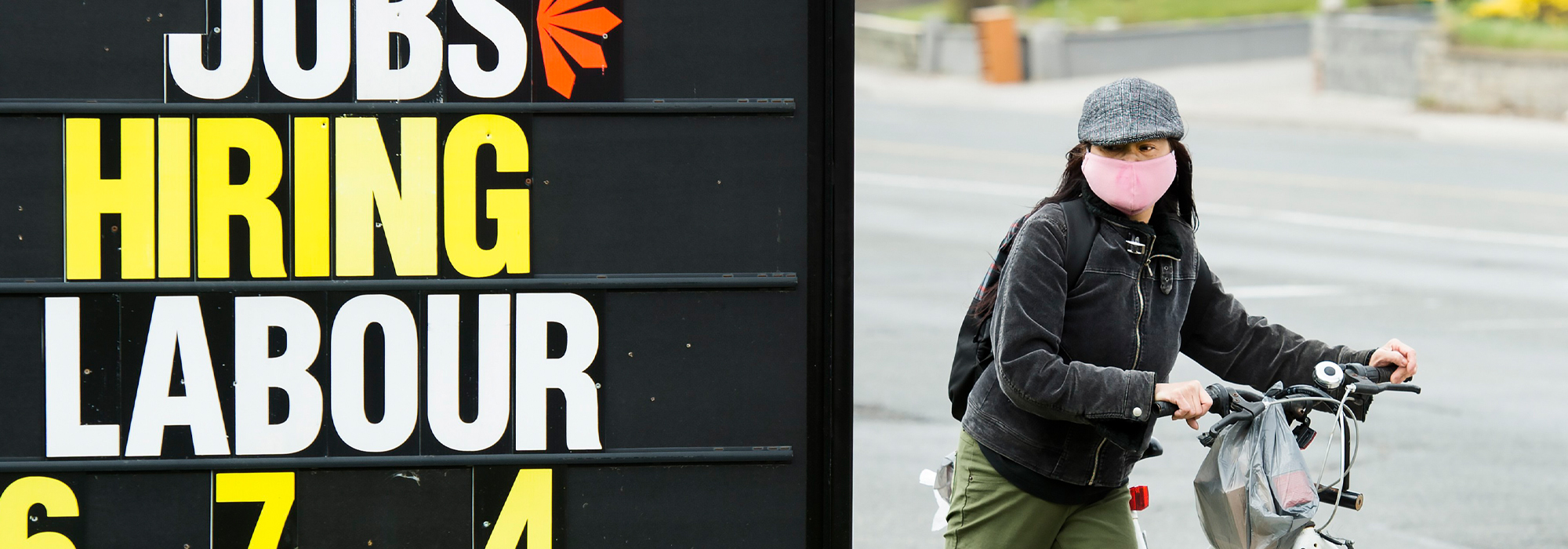
Over the past few weeks, emails from leaders of businesses and organizations have flooded our inboxes, with CEOs assuring clients and customers that despite the “unprecedented times,” they are working to get back to “business as usual.”
Let’s reflect on this statement: business as usual. In the aftermath of COVID-19, will it be possible to return to business as usual? And even if we can, is it something we should be aspiring to return to? For some, “business as usual” is imagined with euphoria. But for many, particularly the “maintainers” – those who quite literally maintain us – business as usual can be inequitable, unsafe, and precarious. For the people who keep facilities clean, buildings secure, supplies delivered, shelves stocked and much, much more, their work is often done behind the scenes, too often unseen or unnoticed.
Maintainers and innovators
The common proverb, “necessity is the mother of invention” is helpful here. But what about crisis? Could crisis be the mother (or parent) of innovation?
When former US president John F. Kennedy was visiting the NASA space centre in 1962, he noticed an employee carrying a broom. As the story goes, Kennedy introduced himself to the employee and asked what his job was. The employee, a member of the custodial team, responded, “Well, Mr. President, I’m helping to put a man on the moon.”
This story is a reminder of how important everyone’s roles are in a system. The maintainer that Kennedy met that day understood how his role contributed to the efforts of the innovators – the astronauts and engineers – and the overall mission. Too often we romanticize the innovation process and fail to consider the system that supports it. Innovations and big ideas rarely come from an isolated eureka moment; they most often arise out of collaboration and the support of people from all levels, with many iterations over time that lead to the “moment” of invention. When we understand innovation as more than an aha moment, it allows us to better recognize the role of the maintainers in the process.
For many of us living and working from home as we shelter-in-place, the role of the maintainers has become more necessary and noticeable. From the grocery shoppers behind Instacart (a grocery delivery and pick-up service) to those delivering meals for Uber Eats along with those who are packaging, shipping and organizing items for Amazon and other e-commerce sites, maintainers face some of the highest risk of exposure to COVID-19. These are low-wage, precarious jobs that are disproportionately filled by people from marginalized communities, often those with racialized and immigrant backgrounds. Such times are magnifying the real-world consequences of inequitable economic systems, discrimination and exclusion.
So, what can we do to prevent inequity from becoming even more stark?
This is the time more than ever before that we need the value of diverse teams to bring perspectives, histories, and insights collaboratively to the table. It’s time to make the “invisible” role of the maintainers visible. Bring the maintainers and innovators together to design solutions that put equity first, and work toward solutions that start with better questions: How can we improve spaces and livelihoods for people who live, look, and think differently than we do? How can we compensate, acknowledge, and do better for people keeping our systems and lives afloat? How might we reimagine and redesign the ways we work and the systems we work within, in a way that should have been done from the beginning, a way that makes diversity, equity, and inclusion fundamental, not additional.
Designing a new and equitable “business as usual”
As we all navigate life with social distancing, new social norms and essential economic considerations, it is easy to delay a larger examination of equity and inclusion. But it will be a fatal mistake not to put equity and inclusion at the forefront as businesses adapt to massive challenges and changes.
If these are truly unprecedented times, business, organizations and their leaders must respond with unprecedented actions. The inequity, exposure, and precarity that the maintainers live with is just one crucial example of what this crisis has highlighted. We have the opportunity to refuse to go back to “business as usual” and instead to re-evaluate the systems that businesses and leaders take for granted and the people who get overlooked. We can and should rebuild and adapt, and set an unprecedented standard for “business as usual.”
This article is part of the The Coronavirus Pandemic: Canada’s Response special feature.
Photo: A woman checks out a jobs advertisement sign during the COVID-19 pandemic in Toronto on April 29, 2020. THE CANADIAN PRESS/Nathan Denette











